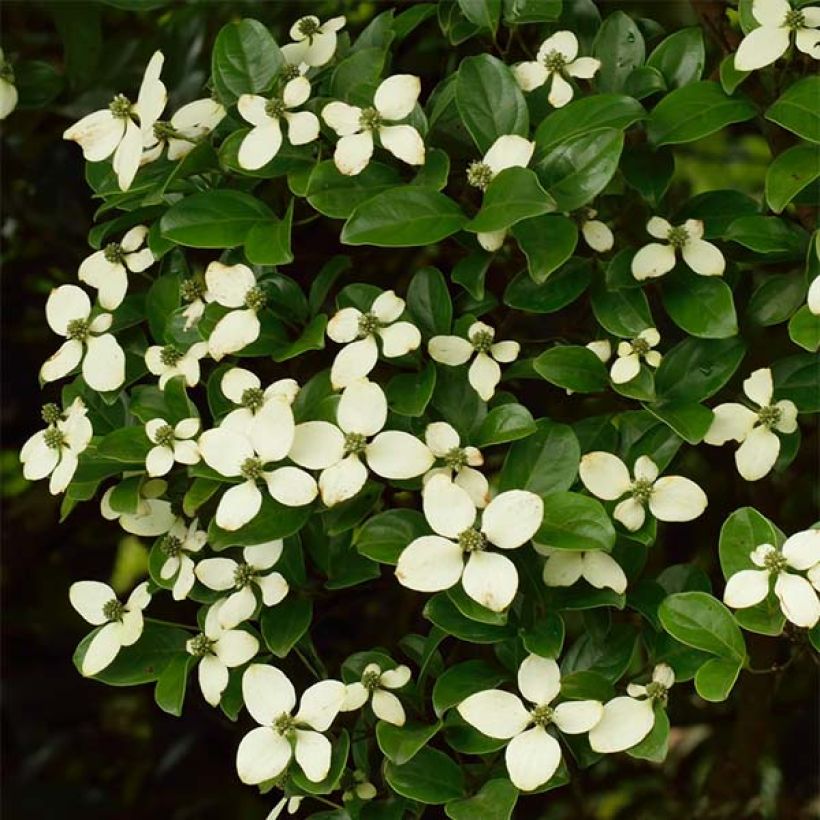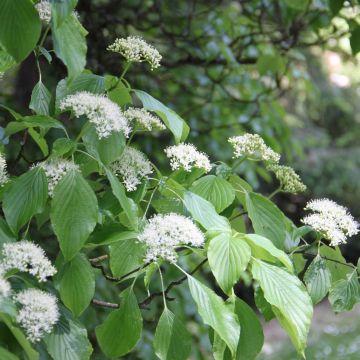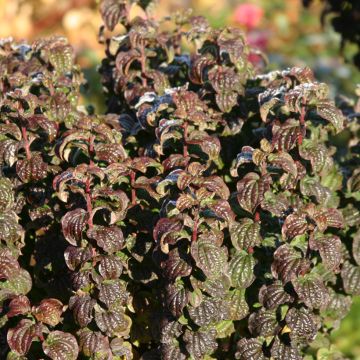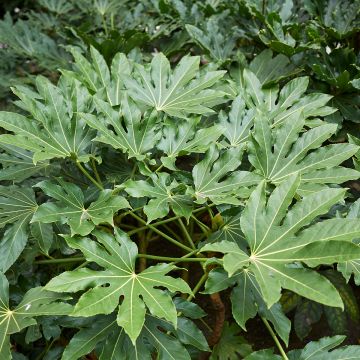

Cornus hongkongensis - Hong Kong Dogwood


Cornus hongkongensis - Hong Kong Dogwood


Cornus hongkongensis - Hong Kong Dogwood


Cornus hongkongensis - Hong Kong Dogwood


Cornus hongkongensis - Hong Kong Dogwood
Cornus hongkongensis - Hong Kong Dogwood
Cornus hongkongensis
Hong Kong Dogwood
This item cannot be shipped to the selected country
Delivery charge from €5.90
More information
Schedule delivery date,
and select date in basket
This plant carries a 24 months recovery warranty
More information
We guarantee the quality of our plants for a full growing cycle, and will replace at our expense any plant that fails to recover under normal climatic and planting conditions.
From €5.90 for pickup delivery and €6.90 for home delivery
Express home delivery from €8.90.

Does this plant fit my garden?
Set up your Plantfit profile →
Description
Cornus hongkongensis is a splendid evergreen bush, with a lovely growth habit. A rare plant, it possesses multiple ornamental qualities! Not only does it display superb glossy green foliage, which turns to sumptuous autumn colours of orange and purple, but it also exhibits a beautiful striated beige bark with white furrows. Very floriferous, it is covered with a multitude of creamy-white, fragrant flowers in summer, followed by pretty red fruits. A remarkable four-season bush.
Cornus hongkongensis, the Hong Kong Dogwood, belongs to the Cornaceae family. It is related to Cornus kousa and has recently been introduced to Europe. It is native to southern China, Laos, and Vietnam, where it grows in deciduous forests, between 600 m and 1800 m (5905.5 ft) in altitude. It forms a small, vigorous, fast-growing tree with a shrubby and slender habit, and its beige bark, traversed by white furrows, is very decorative in winter. It measures 3 to 5 m (9.8 ft to 16.4 ft) in height with a spread of about 3 m (9.8 ft). Its dense evergreen foliage is composed of 8 cm (3.1 in) long, oval and pointed, leathery, shiny leaves. The young leaves are tinged with purple, then the foliage becomes bright green, beautifully colouring from orange to brown-purple in autumn. In June-July, this Cornus is covered with a multitude of fragrant flowers, surrounded by four large waxen creamy-white bracts. Spectacular fruiting occurs in September-October, with the appearance of granulose red spherical fruits appear. The berries are comparable to strawberries.
This robust and quite hardy Hong Kong Dogwood, is happy in both partial shade and sun, with a preference for a sheltered exposure from cold winds. It likes any good fresh garden soil. An ornamental bush par excellence, it will make a beautiful specimen when planted in isolation. It can also be incorporated into the composition of a mixed hedge, where its summer flowering as well as its beautiful foliage will work wonders. It will integrate perfectly into a shrub border, alongside other bushes or small trees.
Report an error about the product description
Cornus hongkongensis - Hong Kong Dogwood in pictures






Plant habit
Flowering
Foliage
Botanical data
Cornus
hongkongensis
Cornaceae
Hong Kong Dogwood
Southeast Asia
Other Cornus
Planting and care
Cornus hongkongensis is very hardy and can withstand temperatures up to -12° C (10.4° F) . It perfers a sunny or semi-shaded exposure, sheltered from cold and drying winds. Tolerating limestone, it should be planted in spring or autumn, in ordinary to humus-rich, well-drained soil, remaining moist to wet. Very easy to grow and requiring no maintenance, it is not susceptible to diseases.
Planting period
Intended location
Care
-
, onOrder confirmed
Reply from on Promesse de fleurs
Evergreen shrubs
Haven't found what you were looking for?
Hardiness is the lowest winter temperature a plant can endure without suffering serious damage or even dying. However, hardiness is affected by location (a sheltered area, such as a patio), protection (winter cover) and soil type (hardiness is improved by well-drained soil).

Photo Sharing Terms & Conditions
In order to encourage gardeners to interact and share their experiences, Promesse de fleurs offers various media enabling content to be uploaded onto its Site - in particular via the ‘Photo sharing’ module.
The User agrees to refrain from:
- Posting any content that is illegal, prejudicial, insulting, racist, inciteful to hatred, revisionist, contrary to public decency, that infringes on privacy or on the privacy rights of third parties, in particular the publicity rights of persons and goods, intellectual property rights, or the right to privacy.
- Submitting content on behalf of a third party;
- Impersonate the identity of a third party and/or publish any personal information about a third party;
In general, the User undertakes to refrain from any unethical behaviour.
All Content (in particular text, comments, files, images, photos, videos, creative works, etc.), which may be subject to property or intellectual property rights, image or other private rights, shall remain the property of the User, subject to the limited rights granted by the terms of the licence granted by Promesse de fleurs as stated below. Users are at liberty to publish or not to publish such Content on the Site, notably via the ‘Photo Sharing’ facility, and accept that this Content shall be made public and freely accessible, notably on the Internet.
Users further acknowledge, undertake to have ,and guarantee that they hold all necessary rights and permissions to publish such material on the Site, in particular with regard to the legislation in force pertaining to any privacy, property, intellectual property, image, or contractual rights, or rights of any other nature. By publishing such Content on the Site, Users acknowledge accepting full liability as publishers of the Content within the meaning of the law, and grant Promesse de fleurs, free of charge, an inclusive, worldwide licence for the said Content for the entire duration of its publication, including all reproduction, representation, up/downloading, displaying, performing, transmission, and storage rights.
Users also grant permission for their name to be linked to the Content and accept that this link may not always be made available.
By engaging in posting material, Users consent to their Content becoming automatically accessible on the Internet, in particular on other sites and/or blogs and/or web pages of the Promesse de fleurs site, including in particular social pages and the Promesse de fleurs catalogue.
Users may secure the removal of entrusted content free of charge by issuing a simple request via our contact form.
The flowering period indicated on our website applies to countries and regions located in USDA zone 8 (France, the United Kingdom, Ireland, the Netherlands, etc.)
It will vary according to where you live:
- In zones 9 to 10 (Italy, Spain, Greece, etc.), flowering will occur about 2 to 4 weeks earlier.
- In zones 6 to 7 (Germany, Poland, Slovenia, and lower mountainous regions), flowering will be delayed by 2 to 3 weeks.
- In zone 5 (Central Europe, Scandinavia), blooming will be delayed by 3 to 5 weeks.
In temperate climates, pruning of spring-flowering shrubs (forsythia, spireas, etc.) should be done just after flowering.
Pruning of summer-flowering shrubs (Indian Lilac, Perovskia, etc.) can be done in winter or spring.
In cold regions as well as with frost-sensitive plants, avoid pruning too early when severe frosts may still occur.
The planting period indicated on our website applies to countries and regions located in USDA zone 8 (France, United Kingdom, Ireland, Netherlands).
It will vary according to where you live:
- In Mediterranean zones (Marseille, Madrid, Milan, etc.), autumn and winter are the best planting periods.
- In continental zones (Strasbourg, Munich, Vienna, etc.), delay planting by 2 to 3 weeks in spring and bring it forward by 2 to 4 weeks in autumn.
- In mountainous regions (the Alps, Pyrenees, Carpathians, etc.), it is best to plant in late spring (May-June) or late summer (August-September).
The harvesting period indicated on our website applies to countries and regions in USDA zone 8 (France, England, Ireland, the Netherlands).
In colder areas (Scandinavia, Poland, Austria...) fruit and vegetable harvests are likely to be delayed by 3-4 weeks.
In warmer areas (Italy, Spain, Greece, etc.), harvesting will probably take place earlier, depending on weather conditions.
The sowing periods indicated on our website apply to countries and regions within USDA Zone 8 (France, UK, Ireland, Netherlands).
In colder areas (Scandinavia, Poland, Austria...), delay any outdoor sowing by 3-4 weeks, or sow under glass.
In warmer climes (Italy, Spain, Greece, etc.), bring outdoor sowing forward by a few weeks.























































